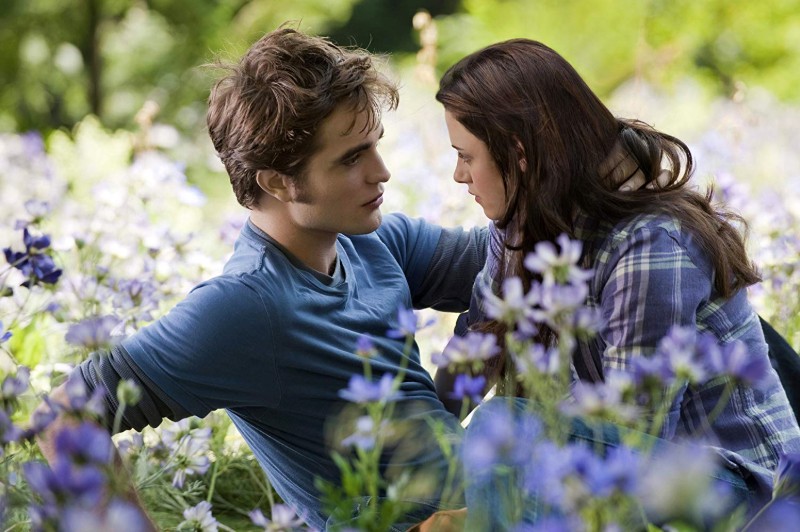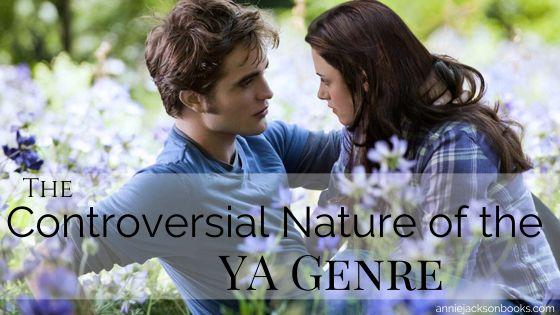From time to time a brouhaha stirs up around the idea of what qualifies as a YA book. Generally this begins with the insistence that a true YA book is written for a teen audience, which would seem self-evident. The genre, after all, is Young Adult.
And yet… if it were so simple there wouldn’t be a controversy.
On the surface, the debate lives in the definition. Is YA an age category or a genre? But deeper than that, the discord stirs when boundaries are crossed and we’re forced to ask where and how do we draw the lines.
The Age Debate
Since the 1940s1 “young adult” has been an age category for books featuring and marketed to teen readers. Early titles included Nancy Drew and The Hardy Boys. Through the 80s and 90s books like Sweet Valley High and The Babysitters Club dominated the category with their perky teen characters, mild adventures and the softest hint of romance perfectly appropriate for teen readers. So popular, in fact, that in 1985, Sweet Valley High became the first YA series to hit the New York Times bestseller list2.
And yet, it can easily be argued that The Babysitters Club was the more relevant series. Taking a note from Judy Blume it addressed pertinent topics like divorce, blended families, learning disorders and health issues. Serious topics, but told through the more innocent lens of a teenager than the cynical view of an adult.
There were also books that didn’t fit the YA mold of the time. Where did The Blue Sword by Robin McKinley, A Wrinkle in Time by Madeleine L’Engle or the Choose Your Own Adventure series fit?
According to libraries and bookstores, they all belonged in the Children’s or Juvenile section where one could find anything from picture books to The Hobbit by J.R.R. Tolkien. Despite the YA label, a children’s book was anything that wasn’t an adult book.
Until one day all that changed….
The Twilight Fissure
In 2005, Twilight dawned on the book scene. Something of a hybrid of the YA books before, it offered the fast pace of a Babysitters Club book, the romance of Sweet Valley High, with a visceral emotional vibrance (due in large part to its first person POV), the action of a Choose Your Own Adventure, along with serious themes told through the innocent lens of its teen characters. Despite its flaws, Stephenie Meyer crafted a story interesting enough for adult readers and appropriate enough for teen readers.

The real game changer, however, was everything that came after Twilight.
Three years later (2008) The Hunger Games volunteered first-person, dystopian action with a dash of romance (a requisite love triangle) told through the innocent lens of teen characters. From 2008-2011 the volume of Twilight knockoffs demanded a new section in libraries and bookstores for young adult titles (Fallen, Hush, Hush and Unearthly: Twilight with angels | Blue Bloods: Twilight with prep school vampires | Beautiful Creatures: Twilight with witches | Shiver: Twilight with wolves | City of Bones: Twilight with demons | Paranormalcy and The Iron King: Twilight with fairies).
Despite the argument that YA is an age category, a writing style had emerged that continued to expand and mature. Divergent (2011) exemplified this new faction as one of the first young adult bestsellers that didn’t take plot notes from Twilight but still fit within the writing style of first-person, fast paced, with “an immediacy in the prose”3 that better fits the description of a genre than an age category.
This style of writing grew in popularity year over year and often made more money than most other genres. A 2015 Neilson study found that “while print sales of adult fiction and nonfiction have dropped in the U.S., the juvenile market has grown 40% in the last decade, with a 5% market share growth in the last three years.”4
Much like blockbuster movies, that sort of growth and profit was only possible because the YA genre had expanded beyond teen readers. A 2010 survey revealed that “47 percent of 18- to 24-year-old women and 24 percent of same-aged men say most of the books they buy are classified as young adult,” due in large part to the writing style. These adults, after all, weren’t rereading The Babysitters Club or The Hardy Boys. In fact, those books are often now considered more middle grade than YA as that more accurately indicates the age of readers who enjoy those stories and find the subject matter relevant.
Adults are drawn to a genre “explicitly intended to entertain. … YA authors are able to have a little more fun…with better plots, better characterizations, a more complete creation of a world.”5
For all intents and purposes, “young adult” has become both an age category and a genre. Therein lies the controversy. Before we can define what is a young adult book, we have to agree on our definition of the term.

Breaking the Boundaries
More easily defined is what does not constitute a young adult book. Explicit content, whether it’s language, violence or sex, inevitably brings the YA controversy to the forefront of discussion amid social media. The age categorists cry, “This isn’t acceptable for a teen audience. It can’t possibly be YA!” While the genreists reply, “I’m an adult and can read whatever I want, including salacious books written in a YA style.”
Those genreists, however, enjoy the writing style without truly understanding the genre. The Hunger Games, after all, isn’t Game of Thornes. YA can deal with serious themes, might include violence and romance but it does so without being graphic or explicit. When stories defy that innocent perspective, described as “intense and pure” by Sweet Valley High creator Francine Pascal6, they break the boundaries of both the genre and the age category. Because explicit is inappropriate for teen readers (though what level and how explicit is a whole other controversy). And explicit content is breaking the genre boundaries, in much the same way as a romance that doesn’t have a happy ending.
Thus the invention of the ludicrous “New Adult” category which capitalizes on the writing style of young adult novels but with college-age characters and sex. New Adult is, in its own warped way, proof of a particular writing style (or a genre if you will). It is also evidence that explicit content is breaking the boundaries and should be categorized as something else, whether that argument is based on a violation of the age range or a violation of the innocence convention of the genre.
The best definition of a Young Adult book, then, isn’t about the age category or the style of writing. It’s about how content is handled. YA has a long history of dealing with serious content honestly. It has a more recent history of playing in every other genre from romance to mystery and fantasy to sci-fi. No matter how gritty the story, however, YA approaches the material with a certain innocence. To stray into the graphic or salacious is to break the boundary of the genre, no matter how you define it.

- “A Brief History of Young Adult Fiction” https://daily.jstor.org/history-of-young-adult-fiction/ ↩︎
- “The Baby-Sitters Club Changed YA—Now, YA Is Changing BSC” https://parade.com/1057841/gabriellemoss/babysitters-club-reboot-books-ya-today/ ↩︎
- “The Kids’ Books Are All Right” https://www.nytimes.com/2010/08/08/books/review/Paul-t.html?_r=3&ref=books ↩︎
- “Nielsen Summit Shows the Data Behind the Children’s Book Boom” https://www.publishersweekly.com/pw/by-topic/childrens/childrens-industry-news/article/68083-nielsen-summit-shows-the-data-behind-the-children-s-book-boom.html ↩︎
- “Young adult lit comes of age” https://www.latimes.com/entertainment/la-et-young-adult8-2010mar08-story.html” ↩︎
- “14 Things You Might Not Know About Sweet Valley High” https://www.mentalfloss.com/article/68100/14-things-you-might-not-know-about-sweet-valley-high ↩︎

Leave a Reply